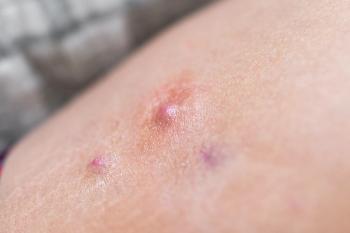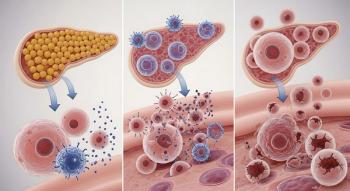
Lumakras Can Trigger ILD. New Findings Suggest Why
Key Takeaways
- Lumakras can cause ILD through off-target binding to PPARγ, mediated by FABP4, leading to lung damage.
- Blocking the FABP4-PPARγ axis may mitigate Lumakras-induced lung injury, offering a potential therapeutic strategy.
An off-target interaction with nuclear receptor PPARγ may trigger a sequence of events that results in lung injury.
Lumakras (sotorasib) is a cancer drug that has been approved for the treatment of non-small cell lung cancer harboring the KRAS G12C mutation. Over the past few years, it has shown clear clinical benefits. Still, its use has been hampered by rare but serious cases of interstitial lung disease (ILD), whose cause has remained largely mysterious.
A
The research, published in Cell Communication and Signaling in early October 2025, suggests that what begins as an off-target effect of the drug may rapidly cascade into lung damage, displaying both a warning for clinicians and a potential new therapeutic target.
The research team, led by Jiaqi Zhang, used a combination of transcriptomics, metabolomics and cell/mouse models to trace how Lumakras triggers lung epithelial injury. From the data, the researchers discovered that Lumakras binds directly to the nuclear receptor PPARγ at an atypical site (Thr325), a process mediated by a fatty-acid-binding protein, FABP4.
“This off-target interaction activates PPARγ’s downstream program, including upregulation of the mitochondrial enzyme CPT1B and heightened fatty acid oxidation (FAO),” the researchers wrote in their study. “The resultant increase in reactive oxygen species (ROS) triggers alveolar epithelial cell apoptosis, epithelial-mesenchymal transition (EMT) and ultimately fibrotic lung changes consistent with ILD.”
As part of their model, in mice treated with Lumakras, lung sections revealed hallmarks of injury: inflammatory cell infiltration, fibrotic remodeling, elevated markers of apoptosis and EMT.
What’s more, in vitro, epithelial lung exposed to Lumakras and subjected to PPARγ or FABP4 silencing showed reduced apoptosis and ROS accumulation, an indication that blocking the FABP4-PPARγ axis can mitigate damage.
This is important, the researchers noted, because it explains how a targeted therapy intended for cancer can cause unintended lung toxicity via a metabolic-signaling pathway rather than the drug’s primary target.
“The FABP4-PPARγ-CPT1B axis emerges as a novel culprit, suggesting that monitoring or inhibiting FABP4 could reduce ILD risk in sotorasib-treated patients,” the researchers wrote.
The study authors also successfully demonstrated that the compound hyperoside, which suppresses FABP4 expression, reduced lung injury in mice receiving Lumakras, possibly leading the way towards more protective strategies.
On a clinical level, the study suggests that physicians prescribing Lumakras should remain vigilant for early signs of ILD, especially in patients with lung comorbidities. Additionally, biomarker monitoring for FABP4 or PPARγ activity could emerge as a risk stratification tool and must be watched.
Therapeutically, combining Lumakras with FABP4/PPARγ pathway inhibitors or designing next-generation KRAS inhibitors with reduced off-target PPARγ binding may improve safety.
However, the authors caution that the work is preclinical — although the mechanism has been validated in cells and animal models, it is an open question whether Lumakras works this way in humans. Therefore, the authors noted further work is needed to show whether FABP4/PPARγ inhibition is safe, effective and practical in cancer care.
As oncology moves deeper into precision medicine, understanding the off-target ripple effects of potent molecules such as Lumakras will be essential to maximize benefit and minimize harm, so uncovering a compelling new mechanism of drug-induced lung injury offers hope for mitigating a feared complication of KRAS-targeted therapy.
Newsletter
Get the latest industry news, event updates, and more from Managed healthcare Executive.

















































